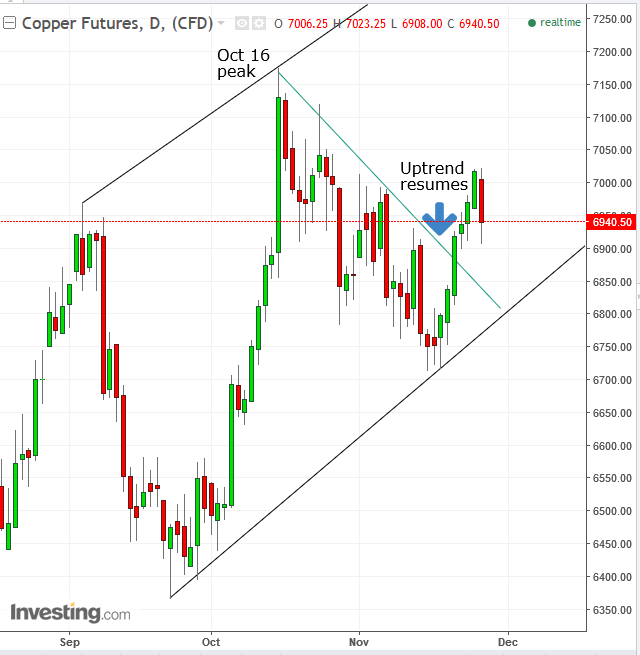by Pinchas Cohen
Don't Be Scared By Today's Commodity Fall
The first rule of trading is “buy low, sell high.” Simple enough, isn’t it? It’s obvious! Well, if it were indeed so simple, why do so few traders make money? Turns out, it isn't so simple.
An asset is low because it has fallen from a higher price. Not many investors are willing to put their hand out and catch a falling commodity. This type of trading takes guts.
Today’s commodity slide is just such a scare. China's data suggests that growth has calmed down over the past month. That's still well within the range of a healthy economy. Which continues to bode well for the red metal, a key base metal for any economic expansion. Here are the salient facts for copper at this time.
- It’s set for a 26 percent annual gain, its largest since 2010.
- Open interest on the red metal, or the number of open contracts, is the highest in 18 months. The herd mentality and a high level of gains are most likely the result of this year's rally, which means that more open contracts are betting prices will rise.
- Ignoring the volatility of monthly changes, profits of China’s industrial companies in October actually rose 25.1 percent on a YoY basis.
- Unionized workers at the largest mine in the world, BHP Billiton's (NYSE:BHP) Escondida copper mine in Chile threatened a second strike over the company’s planned layoffs, and workers for the two largest unions at Southern Copper Corporation (NYSE:SCCO) in Peru threatened an indefinite strike on Wednesday if they don’t get a fair share of mining profits.

In addition to being in a long-term uptrend since January 2016, the commodity is also in an uptrend in the midterm, trading within a rising channel. Even ignoring the long-term trend and focusing on the price from September alone, you can see that today’s decline is meaningless. Traders who ignore the crowds are actually hopeful for a continued decline for another couple of days, to reach the expected support of the uptrend line where demand comes in to hit the price back toward the channel-top.
Trading Strategies
Conservative traders should wait for the price to fully return to the uptrend line and wait for confirmation of its support, with an up-day that would cover the preceding down-day. Should the current rate of decline remain steady, it would probably reach the uptrend line in 2 or 3 days, at around $6,800.
Moderate traders would be happy with a return to the uptrend line and not necessarily wait for a confirmation more than just a close above the uptrend line.
Aggressive traders may wait for a partial return to the uptrend line to gain a better entry, with a reduced chance of whipsaw, as well as a better risk-reward ratio to the former, October 16, $7,176.25 peak. We might expect resistance at this level by sellers who remember the 6.4 percent decline from $7,176.25 to $6,713.50, on November 15, a day shy of a month later. A long entry at the current rate of $6,937 would provide a 1:2 risk-reward ratio between the testing of the October 16 peak and the uptrend line.
Very aggressive traders may enter a long right now, aiming past the October peak, counting on a resumption of the uptrend. The October peak rallied 2.85 percent past its former, September, $6,968.50 peak, while even a one percent higher rally would allow the classic 1:3 risk-reward ratio.
